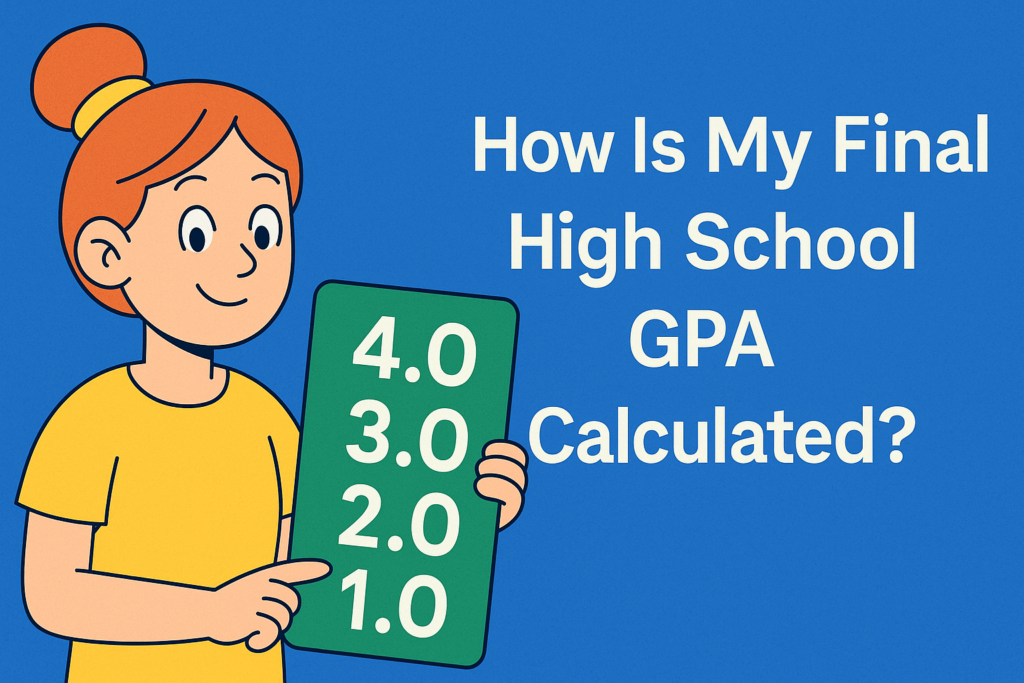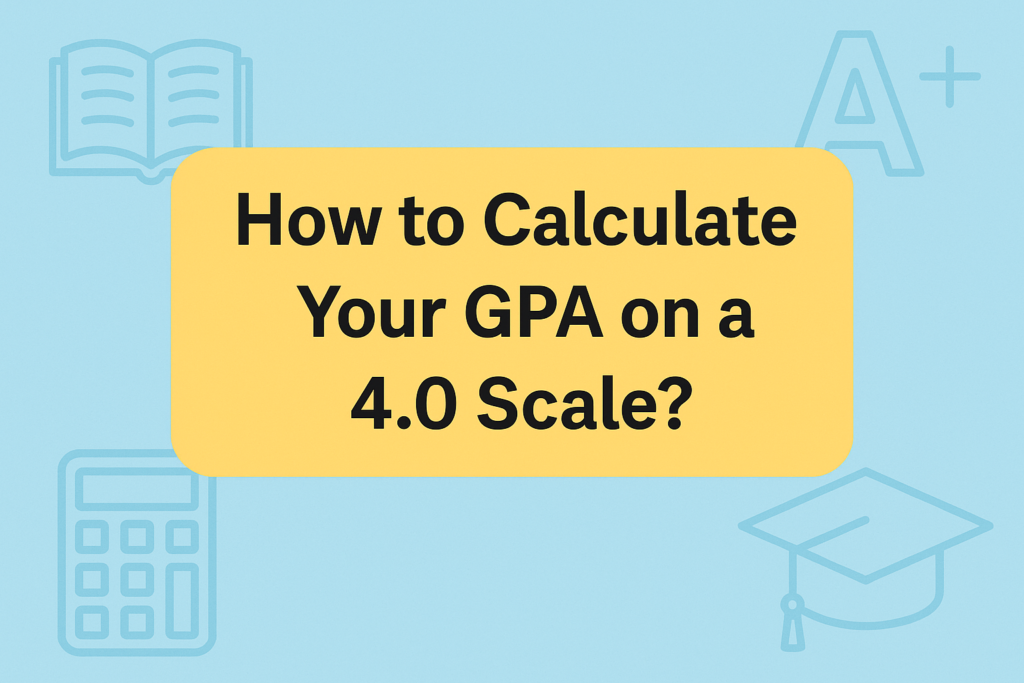Percentage to GPA Calculator
Need a quick way to convert the percentage to GPA? This percentage to GPA calculator helps you do precisely that. You enter your marks and choose the right GPA scale—4.0, 5.0, 7.0, or 10.0—and the tool instantly calculates your GPA.
Select GPA Scale
Your GPA Result
on 4.0 scale
What Is a Percentage to GPA Calculator?
We’ve taken the guesswork out of converting percentage to GPA. There are no formulas to memorize and no grading charts to scroll through. Enter your percentage, select the scale—4.0, 5.0, 7.0, or 10.0—and the calculator gives you your GPA. That’s all you have to do.
It’s fast, it’s clear, and it saves time. Whether you’re planning for college applications or just curious about how your percentage looks in GPA terms, this tool makes the process simple.
You don’t have to be a math expert. You don’t even need to know the formula. The calculator handles that part for you.
Why Use Our Percentage to GPA Calculator?
- Accuracy You Can Count On: This calculator uses standard conversion methods that align with what most schools and universities follow. You type in your score, and the GPA makes sense. No need to double-check it unless you want to.
- No Extra Steps: It’s direct. You don’t need to sign up or enter unnecessary details. One field. One result. If you know your percentage, you already know how to use this.
- Time You Don’t Have to Waste: You could spend 10 minutes finding the right formula—or just 10 seconds using this. The result appears instantly, so you can keep working on that application or whatever else is next.
- It’s Completely Free: No fees, no subscriptions, no surprises. It’s just a GPA converter that works when you need it.
- Useful in Many Situations: From filling out application forms to preparing academic records, this percentage in the GPA calculator fits wherever a GPA is required. It doesn’t cover every rare grading system, but it’s precisely what you need in most cases.
- Helps You Plan with Clarity: Knowing your GPA helps decide what to apply for or where you stand academically. Even if you’re just checking it once, it’s worth knowing the number.
Whether you’re a student planning your next step or just needing a quick conversion, this tool gives you a GPA—no confusion, no delay.
Try our Percentage To SGPA Calculator. One input, one result—just as simple.
🧮 How to Convert Percentage to GPA (Step-by-Step Guide)
Percentage to GPA Conversion Guide
So, you have your percentage. Now what? If a university or form asks for GPA instead, it helps to know how to convert your score accurately. But depending on the GPA scale they use—4.0, 5.0, 7.0, or 10.0—the method will be different.
Step-by-Step Conversion Guide
Know Your GPA Scale
First, find out which GPA system you’re converting to. Each country or university may use a different one. If you’re unsure, check the admission requirements.
Use the Right Formula
Here are the standard formulas used for percentage-to-GPA conversion:
4.0 Scale Formula
GPA = (Percentage ÷ 100) × 4
Example: 78% → (78 ÷ 100) × 4 = 3.12 GPA
Note: Some universities use grade bands instead of direct calculation:
| Percentage Range | GPA |
|---|---|
| 93–100% | 4.0 |
| 90–92% | 3.7 |
| 87–89% | 3.3 |
| 83–86% | 3.0 |
| 80–82% | 2.7 |
| 77–79% | 2.3 |
| 73–76% | 2.0 |
5.0 Scale Formula
GPA = (Percentage ÷ 100) × 5
Example: 82% → (82 ÷ 100) × 5 = 4.10 GPA
7.0 Scale Formula
GPA = (Percentage ÷ 100) × 7
Example: 76% → (76 ÷ 100) × 7 = 5.32 GPA
10.0 Scale Formula
GPA = Percentage ÷ 9.5
Example: 85% → 85 ÷ 9.5 = 8.95 GPA
Common in India and often standardized by UGC.
Compare Scores Across Scales
If you’re curious how your percentage translates across different systems, here’s a comprehensive comparison:
| Percentage | 4.0 Scale | 5.0 Scale | 7.0 Scale | 10.0 Scale |
|---|---|---|---|---|
| 90% | 3.6 | 4.5 | 6.3 | 9.47 |
| 85% | 3.4 | 4.25 | 5.95 | 8.95 |
| 80% | 3.2 | 4.0 | 5.6 | 8.42 |
| 75% | 3.0 | 3.75 | 5.25 | 7.89 |
| 70% | 2.8 | 3.5 | 4.9 | 7.37 |
| 65% | 2.6 | 3.25 | 4.55 | 6.84 |
Use the Calculator (or Keep the Formula Handy)
If you’d rather not calculate it yourself every time, use our online percentage to GPA calculator. But if you’re filling out forms offline or need to double-check, these steps and formulas should help.
Remember: It’s not about doing it perfectly. It’s about making sure your GPA makes sense for the system you’re submitting it to. And now, hopefully, it does.
GPA Calculator Suite
Access our comprehensive suite of GPA calculators
GPA Calculator
Calculate your GPA easily
College GPA Calculator
Calculate your college GPA easily
High School GPA Calculator
Calculate your high school GPA easily
Semester GPA Calculator
Calculate your Semester GPA easily
Cumulative GPA Calculator
Calculate your Cumulative GPA easily
Final Grade Calculator
Calculate your Final Grade easily
Weighted Grade Calculator
Calculate your Weighted Grade easily
EZ Grader – Easy Grade Calculator
Calculate your Easy Grade Calculator easily
CGPA to GPA Converter
Convert CGPA to GPA easily
CGPA to Percentage Converter
Convert CGPA to Percentage easily
CGPA to Marks Converter
Convert CGPA to Marks easily
Grade to GPA Converter
Convert Grade to GPA easily
Marks to Percentage Converter
Convert Marks to Percentage easily
Percentage To CGPA Converter
Convert Percentage To CGPA easily
Percentage to GPA Converter
Convert Percentage to GPA easily
Percentage To SGPA Converter
Convert Percentage To SGPA easily
SGPA to CGPA Converter
Convert SGPA to CGPA easily
SGPA to Percentage Converter
Convert SGPA to Percentage easily
GPA Calculator: The Ultimate Guides to Calculate & Improve Your Grades
How Is My Final High School GPA Calculated?
How Is My Final High School GPA Calculated? What Is a Final GPA in High School? Your final high school GPA is a cumulative number that reflects how you performed across all your classes from freshman through senior year. It’s more than just a semester average. It’s the total snapshot. Colleges use this number to […]
How to Calculate Your GPA on a 4.0 Scale?
How to Calculate Your GPA on a 4.0 Scale? What is GPA and Why Does It Matter? GPA stands for Grade Point Average. It sums up your academic performance into one number. If you’re aiming for college, scholarships, or even some jobs, this number quietly sits on the top of your transcript, silently speaking for […]
How do I calculate my overall High School GPA?
How do I calculate my overall High School GPA? Understanding the Basics of High School GPA What Is GPA and Why Does It Matter? Grade Point Average (GPA) is the most common way schools summarize your academic performance. It takes all your grades and converts them into a single number. That number is used by […]




